Drawing the Line in the Potatoes and Gravy
This year, I’m not waiting for January 1st or “after the holidays” to get my life together. I’ve already decided that the day after Thanksgiving, I’m drawing the line right in the potatoes and gravy. This post is my pre-holiday wake-up call: a plan, a promise, and a little bit of tough love for Gen Xers who are done sleepwalking through their own lives. If you already know you’ll be tired, bloated, and a little mad at yourself after the feast, come along with me. We’re setting a new standard now and drawing that line together, one small, doable choice at a time.
11/22/202511 min read
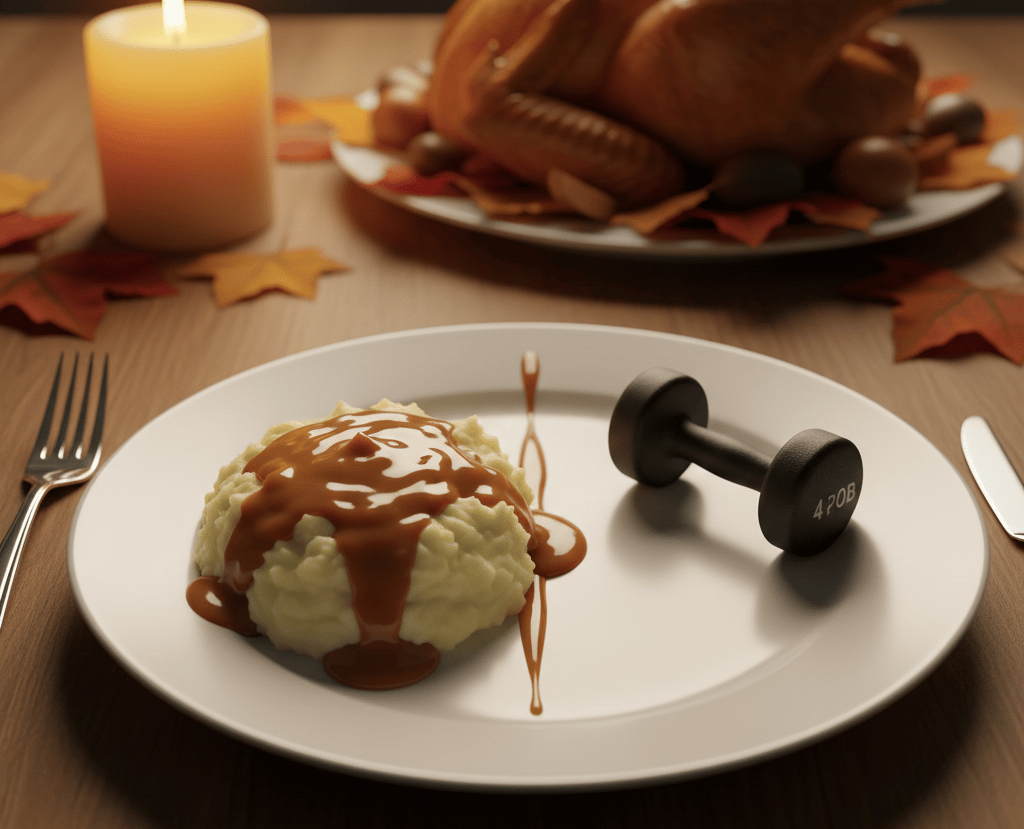

Holiday Hangover & a Reality Check
I picked the day after Thanksgiving as my true turning point, not just a random date.
They always say when you’re finally tired, you’ve got to draw the line somewhere. For me, that line is right in the middle of the potatoes and gravy.
This year, I did something different.
I didn’t wait for January 1st or say I’d "start after Christmas."
I didn’t promise myself I’d “start after Christmas.”
I drew a line in the gravy and said:
“The day after Thanksgiving, I’m done playing.”
Like many Gen Xers, I tried gym memberships, home gyms, and equipment meant to "change everything." What changed was my storage space. I realized the setup had just been collecting dust and guilt, so I sold it.
Here’s the part that really stung: I have actually been successful on strict plans before—Keto, Carnivore, losing weight, feeling good—but like so many, I slid back into old ways and regained the weight and more.
At some point, you stop pretending it’s just “bad luck” and you say to yourself: “Okay, it’s time to wake the f*ck up.”
I was going to wait until after Christmas to start again, but then a thought hit me:
“If I start the day after Thanksgiving, I could actually lose a few pounds and build momentum before Christmas even gets here.”
When my doctor and I discussed GLP-1 medication, I decided to use it for six months or less as a jump-start—not a long-term fix—so I can build sustainable habits while it helps.
So here’s my new, realistic setup:
I’ll use a small walking pad for daily movement, wear my Hoka shoes for comfort, and do strength exercises with 5-lb and 8-lb dumbbells.
My plan is simple and fits both my Gen X body and my current lifestyle, with workouts I can do at home without extra equipment.
If you’re between 40 and 60 and tired of doing the lose–gain–repeat dance, this is your invitation to reset with me.
The “I’ll Start After…” Trap
How was waiting for the perfect time quietly making things worse?
There’s always a reason to wait:
“I’ll start after this holiday.”
“I’ll start after this stressful week.”
“I’ll start after the New Year.”
We say it like time is just sitting there patiently waiting for us to get it together. Waiting was no longer neutral. While I "thought about it," my clothes got tighter, my energy dropped, my joints hurt, and my labs showed results I didn’t like. I realized I was using the calendar as a hiding spot.
I decided to make a different decision. I chose to enjoy Thanksgiving, and the day after, I would start my journey. Not Monday, not January 1st, but the next day.”
No dramatic challenge. No punishment, just a line in the potatoes and gravy.
With this decision, I confronted the reality behind my unused home gym and started considering what setup would actually work for me.
How I traded a complete setup for a walking pad, Hokas, and a couple of dumbbells.
I used to think a serious fitness plan was needed:
A complete home gym
Multiple machines
Complicated programs
At least an hour a day
Now, I want simple and sustainable because that’s what actually gets results.
What I let go of:
The big home gym I never used
The fantasy that I was suddenly going to become a hardcore gym rat
The guilt tied to the equipment I walked past every single day
What I kept (and actually use):
Walking pad – small enough to live in my real world, not Instagram
Hoka shoes – because my feet, knees, and back are not 25 anymore
5 lb & 8 lb dumbbells – light enough to start, heavy enough to matter
A notebook or notes app – where I write what I did, not what I meant to do
That’s my starter kit. No Bowflex museum. No $3,000 treadmill clothes rack.
If you’re building your own version, your list might look like:
Walking pad or a good pair of walking shoes
1–2 sets of dumbbells
A water bottle and a place to track progress
That’s enough to start.
The Six-Month Wake-Up Call
Here’s my plan for the next six months:
I will focus on balanced meals emphasizing protein and whole foods, do strength training 2–3 times a week with my dumbbells, walk daily on the walking pad or outdoors, and track my progress in a notebook or app. I’ll use GLP-1 medication for up to six months as prescribed, focusing on creating these habits during that window.
This is my personal plan, not medical advice. I’m just sharing what I’m doing as a midlife Gen Xer trying to get real.
Keto & Carnivore Taught Me A Lot… I Just Don’t Want to Live There
Taking what worked from past diets without going back to extremes
I know how to do Keto. I know how to do Carnivore. I also know I didn’t keep either of them long-term.
Those approaches taught me some things:
I feel better with more protein.
I do well when I cut back on sugar and processed junk.
Extremes eventually make me rebel.
Now, I will take what works from past diets but refuse to tie myself to any strict labels.
My food focus is simple: prioritize protein at every meal to support muscle and stay full longer; eat more whole foods and fiber, including vegetables and fruit when possible; drink water before snacking; and plan reasonable portions of fun foods in advance, instead of eating them impulsively.
No official “diet name.” Just grown-folks food decisions.
Muscles Over Madness: Why Strength Training Comes First Now
Lifting on purpose, walking for support, and not worshipping cardio anymore.
In my 20s, I thought cardio was everything. If I wasn’t sweating through my clothes and gasping for air, I didn’t think it “counted.”
During my 30s and 40s, I learned a lot.
For Gen Xers, strength training is non-negotiable:
We naturally lose muscle as we age — unless we fight for it.
Muscle supports metabolism, balance, and joint health.
Being stronger makes everyday life easier: stairs, groceries, grandkids, all of it.
Cardio matters for heart health and mood, but I’m not adding an hour of hardcore cardio to an already stressful life.
Too much intense cardio + midlife stress = cortisol city:
More fatigue
More cravings
More “puffy and tired” instead of “fit and strong”
I want my approach to lead to strength and energy, not stress and exhaustion.
So my movement plan is:
Strength training = the main event
Walking = the support act
Here’s how that looks with what I actually own.
Strength (2–3 times a week, 15–25 minutes):
Using my 5 and 8 lb dumbbells:
Dumbbell squats
Dumbbell deadlifts
Bent-over rows
Shoulder presses
Biceps curls
Triceps extensions
My walking goal is most days of the week, for 10–30 minutes per session. I’ll use my walking pad indoors or walk outside when possible, and use this time to relax, reflect, or enjoy entertainment like TV or music. I’m not chasing calorie burn. I want to build strength, protect my joints, and calm my nerves.
GLP-1: My Assisted Start Button (Not a Lifetime Subscription)
Why I chose to use medication for six months or less as a jump start, not a crutch.
Let me say the quiet part out loud: I didn’t jump into GLP-1 blindly. I thought it over, watched others’ journeys, talked to my doctor, worried, prayed, then decided:
“I’m going to start it the day after Thanksgiving and use it for six months or less as a jump start.”
GLP-1 is just support to help me work, not a shortcut or replacement for effort.
I want to use the window it gives me (less appetite, better control) to build new habits.
I plan to be aware of side effects and stay in conversation with my doctor.
I do not want to rely on this forever — that’s why the six-month mental limit is important to me.
And now, let’s talk about the thing we’ve all seen.
I see people giving themselves a weight loss shot and then eating half a pie, and my brain goes: “Make that make sense.”
Here’s the real answer: You can absolutely be on a GLP-1 and still eat dessert sometimes. One slice of pie does not cancel your injection or your progress. The problem isn’t the pie. The problem is when the shot becomes a hall pass to keep all the same habits that got us here in the first place.
I don’t want that.
I’m taking it as a jump start while I rebuild my habits—more protein, strength training, walking, and honesty with myself.
The shot is a tool, not my new personality.
Important: I’m sharing my personal decision and experience. I am not a medical professional, and this is not medical advice. GLP-1 medications are prescription drugs with real risks and side effects. Only you and your healthcare provider can decide if they are right for you, how long to use them, and at what dose.
If You’re On GLP-1 and It’s Going Well
If you’re on a GLP-1 and you’re actually doing well with it — eating differently, feeling more in control, seeing progress — I want to say this clearly:
“You don’t have to feel guilty for using a tool that works.”
You’re not “cheating.” You’re not lazy. You’re not less deserving because you didn’t white-knuckle your way through it on willpower alone.
If your meds are helping you to
Eat in a way you always meant to
Break out of binge cycles
Finally, see the scale move after years of trying
…then I’m happy for you. Truly.
Just remember:
Keep building habits while the meds are helping (protein, strength training, walking, sleep).
Keep an eye on your mental health and how you feel about food and your body.
Keep talking to your doctor about dosage, side effects, and long-term plans.
If it’s going well, keep going — with intention. Don’t minimize your progress just because you had help. We all need help.
If You’re On GLP-1 and Struggling (You’re Not Failing)
Now, if you’re on a GLP-1 and you feel like you’re “doing bad” — still overeating, still emotionally eating, still wrestling with the same patterns — hear me:
“You are not broken, and you are not a failure.”
Medication can help with appetite, but it does not automatically fix:
Old coping habits
Emotional eating
Stress, boredom, or loneliness
The stories we tell ourselves about food and our bodies. Sometimes the shot is working in your body, but your life is still loud, and food is still the easiest comfort you know. That doesn’t make you weak; it makes you human.
If that’s you, try this:
Instead of “I’m doing bad,” shift to:
“My medication is helping one part, but I still need support with the rest.”
Talk to your doctor honestly about what’s really happening (not just the tidy version).
Consider extra support: a therapist, support group, or coach who understands emotional eating.
Pick one tiny behavior to work on at a time:
One high-protein meal a day
One 10-minute walk
One short strength session a week
One “pause and breathe” before you eat for comfort
Small changes are still changes.
If you have had days where you gave yourself the shot and then ate like it never happened? Welcome to the club.
You’re not disqualified. You’re just in the messy middle — and that’s still part of the journey.
Whether your GLP-1 journey feels like “I have finally got traction” or “why am I like this,” you’re still worth the effort. We’re not chasing perfection here — we’re learning how to wake up, adjust, and keep going.
Lift Now, Thank Yourself Later: The Gen X Strength Advantage
Building muscle, protecting joints, and keeping cortisol in check.
For me, “working out” used to mean punishing cardio sessions: running, jumping, sweating like I was auditioning for an infomercial.
Now, success looks very different:
I can lift heavier over time.
My joints complain less when I move.
I feel steady, not wrecked, after a workout.
My body feels more capable, not just smaller.
Strength training in midlife helps with:
Metabolism: More muscle = higher burn, even at rest.
Balance & stability: Huge for preventing falls and injuries.
Joint support: Strong muscles protect aging knees, hips, and backs.
Hormones & stress: Lifting and walking support a better mood and more stable energy, instead of constantly spiking stress with extreme cardio.
I still walk. I still care about steps. But lifting is the priority now. Walking is for my heart, my head, and my sanity — not punishment for what I ate.
The Day-After-Thanksgiving Damage Control Plan
A 7-day reset for real-life Gen Xers (no kale confessionals required)
You don’t need a perfect program. You just need a week that gets you moving, lifting, and thinking differently.
Here’s a simple 7-Day Post-Holiday Reset you can try:
Day 1 (Day After Holiday)
Movement Goal: 10–15 min walk (walking pad or outside in your best shoes)
Food Focus: One high-protein meal (eggs, chicken, Greek yogurt, etc.)
Mindset Check-In: “Today is my line in the gravy. No drama, just a decision.”
Day 2
Movement Goal: 10–20 min walk
Food Focus: Add veggies to at least one meal
Mindset Check-In: Notice: Do you feel even 2% better after moving?
Day 3
Movement Goal: 10–15 min walk + 10–15 min strength (dumbbells)
Food Focus: Drink water before snacks or seconds
Mindset Check-In: “Perfect is canceled. Consistency wins.”
Day 4
Movement Goal: 15–20 min walk
Food Focus: Prioritize protein at 2 meals
Mindset Check-In: Check your energy, mood, and sleep. Any small improvements?
Day 5
Movement Goal: 10–15 min walk + another strength session
Food Focus: Plan tomorrow’s meals (even roughly)
Mindset Check-In: Celebrate 1 small win from this week.
Day 6
Movement Goal: Longer walk if you can (20–30 min)
Food Focus: Have one “fun food” on purpose, not autopilot
Mindset Check-In: “I can enjoy food and still honor my health.”
Day 7
Movement Goal: Gentle movement or rest + short walk if you want
Food Focus: Simple, home-cooked meal if possible
Mindset Check-In: Ask: What do I want to keep doing next week? What needs tweaking?
Remember:
Strength sessions are the priority.
Walking is support and stress relief, not punishment.
The goal isn’t perfection; it’s momentum.
Waking the F*ck Up: Grown-Folks Edition
What it really means to stop sleepwalking through your health in your 40s, 50s, and beyond
This is bigger than a number on a scale.
For me, “waking the fuck up” means:
I’m done pretending my health will magically fix itself later.
I’m done ignoring what my body is clearly telling me.
I’m done starting over and over without changing the way I start.
I’m not trying to be 25 again. I’m trying to be:
Strong enough to move freely
Energized enough to enjoy my life
Healthy enough to be here for the people I love
Confident enough to show up fully, not half-hiding in every photo
Waking up means lifting on purpose, not just walking in circles on a guilt trip.
It means if I’m going to take a shot, I’m also going to do the work.
Okay, Your Turn: What’s One Thing You’ll Do the Day After?
Inviting Gen X readers to pick their first simple step.
If you’re a Gen Xer who:
Has bought the big equipment and watched it gather dust
Has done the strict diets, lost weight, and gained it back
Knows, deep down, it’s time to wake the fuck up…
Then consider this your sign.
You don’t have to do it exactly like I am. You don’t have to take medication. You don’t have to move the way I move. But you do have to decide.
Start with:
A pair of shoes that feel good on your feet (I’m team Hoka)
A way to walk (outside or on a walking pad)
A couple of dumbbells
One small, honest promise to yourself that you actually keep this week
I’ll be sharing how this six-month wellness jump start goes — the walking, the lifting, the food shifts, and the GLP-1 journey — the wins, the struggles, and the “what was I thinking?” moments.
Your turn:
Drop a comment (or write it in your journal):
“What does ‘waking the fuck up’ look like for you the day after the holiday?”
GLP-1 Crew, Talk to Me:
If you’re on a GLP-1 right now — winning, struggling, or somewhere in between — I’d love to hear your experience. Share a win, a frustration, or one small thing you’re working on. This space is for grown folks only: no shaming, no comparing, just honest midlife conversation.
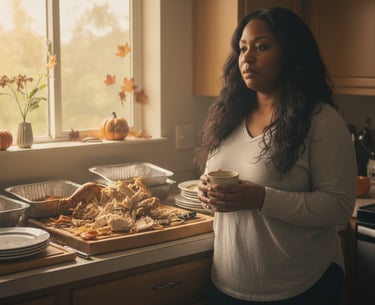


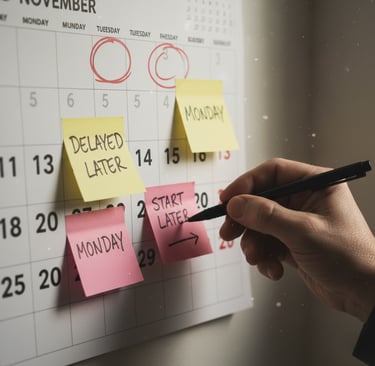
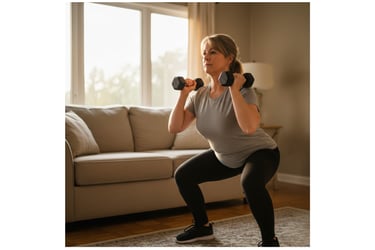

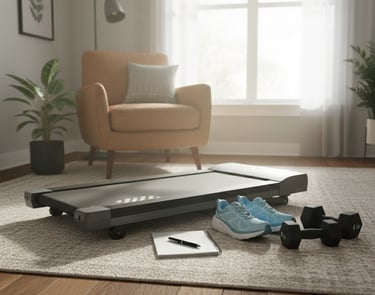








CONNECT
Contact
hello@genxrenaissance.com
© 2025. All rights reserved.
Get fresh insights and tools for your midlife journey
